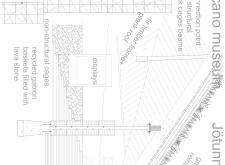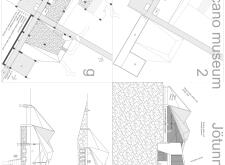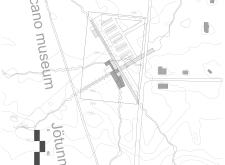5 key facts about this project
The Iceland Volcano Museum, known as Jötunn's Labyrinth, is located in a dramatic volcanic landscape in Iceland. It serves as a center for education and interaction, designed to engage visitors with the region's geological history. The layout follows a labyrinthine approach, allowing individuals to explore the museum while learning about the unique characteristics of Iceland's environment.
Structural Elements
Key structural components highlight the relationship between the building and the natural surroundings. Connection points for structural rock cages act as important features within the design, reflecting the strength of the local geology. A green roof plays a vital role in supporting sustainability, merging the museum with its environment and promoting the idea of coexistence between architecture and nature.
Material Usage
Fir timber frames and plank roofs are central materials that give the museum a connection to traditional Icelandic building methods. These materials offer both durability and a link to the area's cultural practices. Additionally, recycled gabion baskets filled with lava stone provide unique display spaces that emphasize the geological context of the museum while promoting environmental responsibility.
Functional Program Spaces
The museum’s layout includes various functional areas that enhance visitor experience. The information center serves as a starting point for guests, while the exhibition hall presents engaging displays focused on volcanic activity. The sunken lava garden offers an interactive space, encouraging visitors to experience and learn about the landscape up close, thus reinforcing the museum's educational goals.
Exterior Interactions
Large glass walls throughout the museum create opportunities for viewing the landscape outside, connecting visitors with the surrounding terrain. This design choice helps to blur the lines between the interior and exterior. Lava walls, constructed within gabion cages, highlight the relationship between the structure and the geological features of the area, emphasizing the museum's focus on geology and natural beauty.






















































